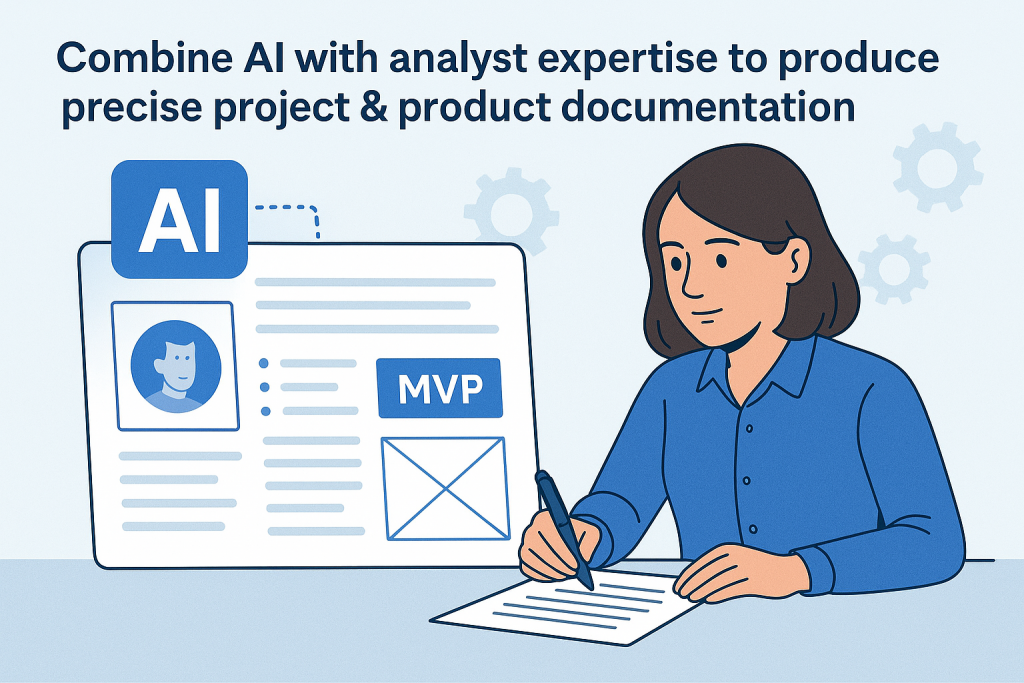- Services
- Artificial Intelligence Development
- Deep Learning & Neural Network Development Services
- Professional Machine Learning Development Services
- Enterprise Computer Vision Development Services
- Enterprise Natural Language Processing Development Services
- Chatbot & Conversational AI Development Services for Business
- Enterprise Computer Vision Solutions For Healthcare
- Transformative Healthcare AI Development
- Retail & E-commerce AI Solutions for Personalization & Growth
- AI Integration & MLOps Development Services
- AI Agent Development & Intelligent Automation
- Generative AI Solutions
- Outsourced Product Development
- Custom Software Development
- Software Customization & Integration
- Mobile App Development
- Custom Application Development
- Software Architecture Consulting
- Enterprise Application Development
- AI-Powered Documentation Services
- Product Requirements Document Services
- Artificial Intelligence Development
- Industries
- Healthcare Software Development
- Telemedicine Software Development
- Medical Software Development
- Electronic Medical Records
- EHR Software Development
- Remote Patient Monitoring Software Development
- Healthcare Mobile App Development Services
- Medical Device Software Development
- Healthcare Mobile App Development Services
- Patient Portal Development Services
- Practice Management Software Development
- Healthcare AI/ML Solutions
- Healthcare CRM Development
- Healthcare Data Analytics Solutions Development
- Hospital Management System Development | Custom HMS & Healthcare ERP
- Mental Health Software Development Services
- Medical Billing & RCM Software Development | Custom Healthcare Billing Solutions
- Laboratory Information Management System (LIMS) Development
- Clinical Trial Management Software Development
- Pharmacy Management Software Development
- Finance & Banking Software Development
- Retail & Ecommerce
- Fintech & Trading Software Development
- Online Dating
- eLearning & LMS
- Cloud Consulting Services
- Healthcare Software Development
- Technology
- Products
- About
- Contact Us
Combine AI with analyst expertise to produce precise project & product documentation

In custom software development, precise documentation is the backbone of predictable delivery. Spec ambiguity, leaking requirements, and out-of-date docs are the usual suspects behind scope creep, rework and missed deadlines. The smart move isn’t to replace people with AI — it’s to combine AI speed with your analysts’ domain knowledge so the documentation that fuels development is faster, clearer, and trustworthy.
Below I outline a practical, repeatable approach you can adopt at your company: the roles, the workflow, concrete prompt examples, templates you can reuse, and guardrails to make the whole process safe and reliable.
Why combine AI + analysts?
-
Speed — AI accelerates the first draft of user stories, API specs, test cases and UI text. What used to take days can be produced in hours.
-
Consistency — LLMs enforce consistent language, style, and structure across multiple documents and teams.
-
Coverage — AI can quickly generate exhaustive checklists, edge cases, and technical matrices that analysts can validate and prioritize.
-
Focus human effort — Analysts spend less time on boilerplate and more time on nuance: business rules, constraints, trade-offs, and validation with stakeholders.
-
Living documentation — When integrated into a pipeline, AI + humans support continuous updates tied to commits, PRs or change requests.
The workflow: six practical stages
-
Project setup & knowledge capture
-
Analyst conducts stakeholder interviews, collects existing artifacts (contracts, wireframes, meeting notes).
-
Capture recordings/transcripts, domain glossaries, data schemas, and regulatory constraints in a single place (Confluence, Notion, or a private vector DB).
-
-
Seed the AI with curated context
-
Use the captured knowledge as RAG (retrieval-augmented generation) context so the model answers from your facts — not from the open web.
-
Provide a concise brief with scope boundaries, acceptance criteria format, and template to follow.
-
-
AI-first draft
-
AI generates initial artifacts: epic summaries, user stories, acceptance tests, API endpoints, sequence diagrams (text descriptions), UI copy, and integration checklists.
-
Produce multiple variants if helpful (minimal / standard / detailed).
-
-
Analyst enrichment & validation
-
Analysts review drafts focusing on correctness, nuanced constraints, and business intent.
-
They annotate, correct factual errors, add missing non-functional requirements (security, performance), and mark items for engineering input.
-
-
Technical review & test-planning
-
Engineers review for implementation feasibility; QA drafts automated and manual test cases based on the acceptance criteria.
-
Link tests to stories and mark traceability.
-
-
Publish & maintain
-
Approved docs are versioned and published to your single source of truth.
-
Set up triggers to regenerate or summarize changes when relevant code, APIs, or decisions change.
-
Example: a working prompt + analyst checklist
AI prompt (seeded with project context via RAG)
You are a technical writer for Acme Devs. Using the attached context (project brief, data model, and UX mockups), generate:
1) Epic title and two sub-epics.
2) 6–8 user stories in "As a / I want / So that" format with acceptance criteria (Given/When/Then).
3) API contract draft for the main resource (endpoints, request/response examples, error codes).
4) UI copy for key screens with microcopy for tooltips and validation messages.
Follow the company style: concise sentences, present tense, and use 'Product Owner' titles when referring to stakeholders.
Analyst checklist for review
Does each user story reflect stakeholder intent?
Are acceptance criteria testable and unambiguous?
Are data privacy and regulatory constraints present where applicable?
Have non-functional requirements (SLA, latency, throughput) been captured?
Are external integrations and third-party limitations documented?
Do API examples include edge cases and error conditions?
Does UI copy reflect localization needs and accessibility considerations?
Has traceability been added (story ↔ requirement ↔ test case)?
Documentation templates (reusable outlines)
Epic document
-
Title & short description
-
Business value & KPIs
-
Stakeholders & decision owners
-
Sub-epics and dependencies
User story template
-
ID
-
Title
-
As a / I want / So that
-
Preconditions
-
Acceptance criteria (Given/When/Then)
-
Data model references
-
Tests (automated/manual)
-
Notes / open questions
API contract (minimal)
-
Endpoint (method + path)
-
Purpose
-
Request schema (example)
-
Response schema (example)
-
Authentication & rate limiting
-
Error codes & handling
-
Backwards compatibility notes
Practical integrations and tooling suggestions
-
RAG + vector DB — store transcripts, legal clauses, and glossaries for the model to retrieve relevant facts instead of hallucinating.
-
Docs as code — keep docs in Git alongside the codebase (Markdown + PR workflow). This makes updates traceable and automatable.
-
CI triggers — regenerate summaries or notify owners when a PR touches relevant modules.
-
Issue linking — link stories to Jira/GitHub issues and tests to test management tools.
-
Design handoffs — connect generated UI copy to Figma or design tokens to avoid copy/design drift.
(You can choose different tools depending on preference — the key is connection and automation between knowledge store, LLM, and your dev workflow.)
Quality & risk management (don’t skip this)
Hallucinations — mitigate with RAG and by attaching source citations for every factual claim. Always require analyst verification for business-critical details.
Security & IP — keep sensitive specs in private, controlled environments. Use on-prem or enterprise LLM options, or API policies that prevent data exfiltration.
Version control — treat docs like code. Roll back bad changes, and publish changelogs for doc updates.
Governance — define who can approve changes and what must be validated (e.g., legal or security sign-offs).
Measurable outcomes to track
-
Time to first draft (days → hours)
-
Number of clarification requests from engineering per sprint
-
Rework incidents caused by ambiguous requirements
-
Coverage ratio: stories → tests automated
-
Stakeholder satisfaction with clarity of specs
Track these KPIs before and after rolling out your AI+Analyst documentation pipeline to demonstrate value.
Small case example (illustrative)
Before: 1 week to write a feature spec; engineers request clarifications across 3 meetings; acceptance tests incomplete.
After: AI produces first draft within an hour, analyst reviews and enriches in one focused 2-hr session, engineers need one short sync; acceptance tests are ready and automated — feature moves to dev with fewer unknowns and smaller sprint overhead.
Final words — start small, build trust
Begin by piloting AI-assisted documentation on a non-critical module. Measure time savings and error reduction, refine prompts and the analyst checklist, and extend gradually. The combination of AI speed + analysts’ domain judgment is not a replacement — it’s a multiplier. It gives your teams the clarity they need to deliver software faster, with fewer surprises.
Recent Posts
- How Much Does Custom Software Development Cost in 2025? Real Numbers & Breakdown
- AI-Driven Job Displacement: The Workforce Overcapacity Crisis Unfolding Across Global Enterprises
- Transforming Education Through AI: How Intelligent Learning Loops Address the Skills-Knowledge Mismatch
- The Digital Authenticity Crisis: When AI-Generated Content Transforms Culture Into Commodified Service
- Non-Human Identities Crisis: How AI Agents Are Transforming Enterprise Cybersecurity and Identity Management at Unprecedented Scale


